Sheraton Ritz Hotel
THE SHERATON RITZ HOTEL
The Sheraton Ritz Hotel was located at was then 315 Nicollet Ave. (It became Nicollet Mall in 1974.) It took up a City block bounded by Nicollet Mall, Marquette Ave, and Third and Fourth Streets.
BEFORE THE RITZ
The hotel was built on the ashes of buildings cleared for the Gateway District Urban Renewal Project:
309 – 307 Nicollet consisted of one, three, and four story brick store and office buildings, demolished in April 1961.
311 – 329 Nicollet, including 32 – 44 So. Fourth Street and 331 Nicollet, was collectively known as the Palace Building. It consisted of three four-story buildings, two eight-story buildings, and a nine story brick store and office building. They were demolished from May to August 1961.
CONSTRUCTION
The hotel was the first major structure built after the clearing of the Gateway. The building permit was taken out on April 23, 1962, and the cost listed was $5,631,000. James Lileks wrote that it was the first big hotel built downtown since the 1920s. The hotel opened to the public in 1963. The 17-story hotel had 305 air-conditioned rooms.
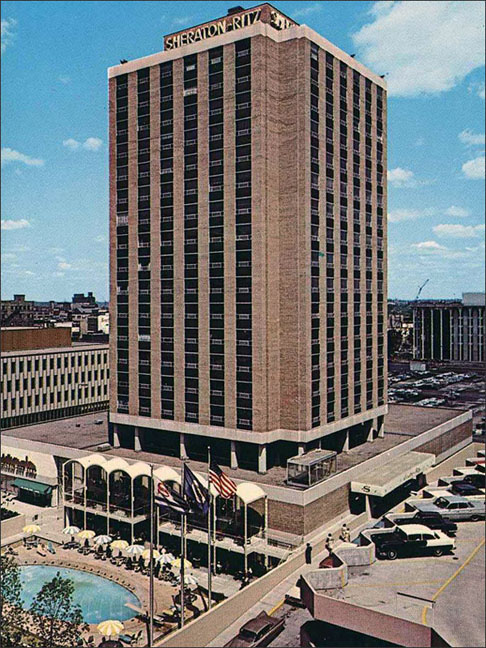
1963 Postcard courtesy of the Hennepin County Library Special Collections postcard collection
FEATURES
The hotel itself was done in the 1960s modern style with a white marble lobby and chrome metal accents and fixtures. The ground level of the hotel featured a plaza and shopping arcade, including the International Design Center, an importer of Scandinavian home furnishings.
The still below from one of the Route 66 episodes shows that, although the hotel was supposed to be Jetsons modern, the rooms were quite busy and frilly, as James Lileks pointed out. An ad on June 3, 1963 explains that Sheraton Ritz architect-designer Mary Morrison Kennedy designed the top seven floors in French Provincial, with Louis XVI furniture, with deep pile carpeting, and “shimmering crystal chandeliers, reminiscent of the palace at Versailles.” (Minneapolis Star, June 3, 1963)
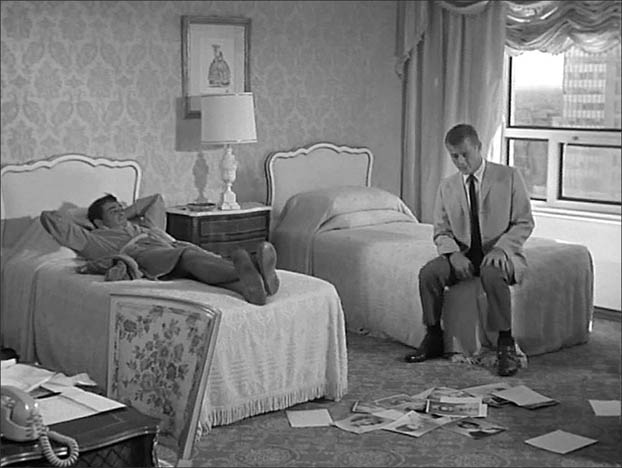
Image courtesy James Lileks
The swimming pool was constructed so that it could be converted into an ice skating rink in the winter.
In 1963, the hotel was featured in three episodes of the 1960s television series Route 66.
During its lifetime it counted as guests at least two U.S. presidents and celebrities Bob Hope, Henry Fonda, and Ed Sullivan.
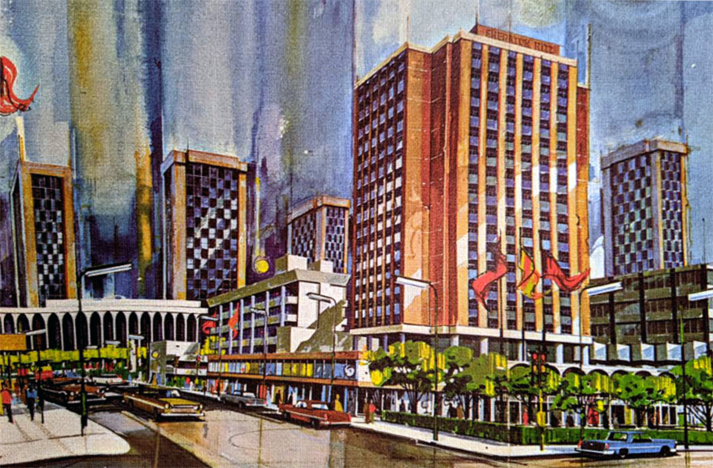
Image from the Nokohama website
VENUES IN THE HOTEL
LA BRASSERIE
The other restaurant was called La Brasserie, described as a “coffeehouse with la haute cuisine,” which opened on June 3, 1963. The atmosphere was “a light-hearted, chic copy of Paris in the Gay Nineties.” (Where magazine, April 20, 1968)
THE CHESHIRE CHEESE ROOM
The main dining room was called the Cheshire Cheese Room, which opened June 17, 1963. A description in the September 1974 issue of Where magazine mentioned “wooden beams and paneling, red and black table linens, stained glass panels, copper kettles and candle chandeliers, which help to recreate an Elizabethan atmosphere.” Wait staff dressed in colorful, Elizabethan costumes. This is where you could get a yard of ale served in a wooden stand. Our waitress memorized the orders of 13 people, most of whom changed their potato order.
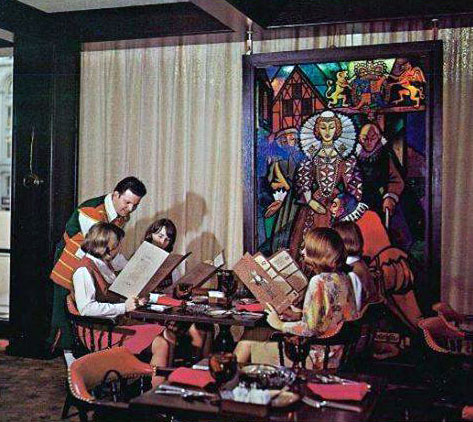
Image of the Cheshire Cheese Room from the 1965 St. Louis Park Echowan Yearbook
THE GOLLIWOG LOUNGE
The Golliwog Lounge opened on May 31, 1963. This was the first room to open, even before the hotel itself. It is unclear where the original location of the Golliwog was, but given that there were entrances from the street and from the hotel, it may have been on the first floor.
The room “features a leggy breed of waitresses known as the Golliwog Girls” who wore brief costumes and wild hats. On opening day the costumes weren’t ready, so the waitresses just wore something that was “merely brief,” reported Will Jones.
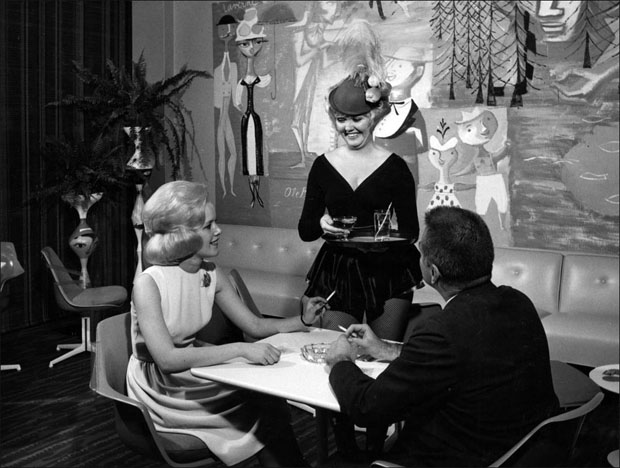
Image from James Lileks
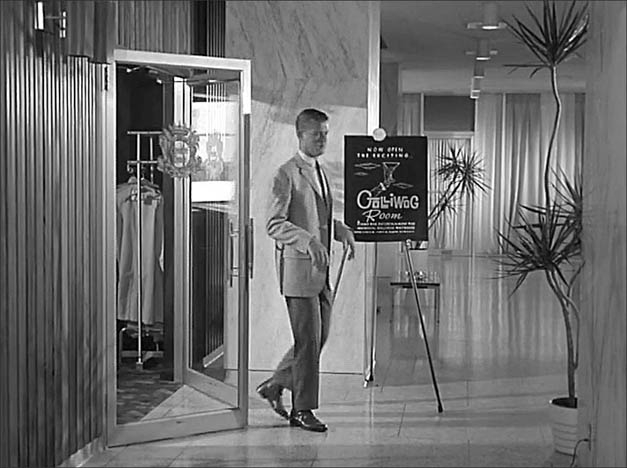
The venue was called the Golliwog Room on Route 66. Image from James Lileks
The first ad for the Golliwog promised a piano bar with Hal Cooke at the Keys, June 8, 1963.
The Golliwog reopened on the 19th Floor on January 17, 1964. Jazz artist the Bill Samuels Trio was the entertainment. General Manager Charles T. Carey placed an ad apologizing that hundreds had to be turned away on January 17 and 18, 1964. The room only held 120 people. (Minneapolis Star, January 22, 1964)
A popular performer at the Golliwog was Doris Hines. Three Keyes. September 1965. Review by Allan Holbert Trib September 22, 1965 – December 28. November 1, 1966 – December 15
Kay Nygaard
In April 1966, a space that was left empty on the 19th Floor during construction was used to expand the Golliwog Lounge and build 16 more suites and rooms.
From March 13 to 18, 1967, the Golliwog booked Chad Mitchell, late of the Chad Mitchell Trio, as part of a new policy of big name entertainment. (Allan Holbert, Minneapolis Tribune, February 19, 1967) Mitchell got excellent reviews from both Will Jones of the Tribune and Don Morrison of the Star. This was also a first departure from jazz for the Golliwog.
A 1968 ad promised no cover, no minimum, no dull moments.
A July 1969 ad named Stanley Stein as the host.
John Denver did his perhaps first solo gig here between May 12 and June 1, 1969.

Minneapolis Tribune, May 12, 1969
THE RITZ BAR
The Ritz Bar, at 318 Marquette, opened on March 17, 1964. Oh my. I quote:
Now at last, in a world of feminine frippery, the Sheraton-Ritz offers a haven for the harried male. The new Ritz Bar, on the Marquette Avenue street level (beneath the parking ramp) is open to men only from 11:00 AM to 8:00 PM Monday through Friday.
The Ritz Bar is Frankly and forthrightly a man’s saloon, true to the fine old tradition. Here the stag can drink his fill amidt good talk and good fellowship, free from the distractions of the opposite gender. A cold English buffet provides hearty masculine fare.
Special note to Wives and Sweethearts: Dear ladies, for diversion a deux, we offer the many splendors of La Brasserie, the Cheshire Cheese, the Golliwog Lounge. But please do not ask your escort to take you to the new Ritz Bar. There he goes alone, a man among men. But his absence from your side may well make his heart grow fonder.
(Minneapolis Star, March 17, 1964)
On March 18, Will Jones minced no words when he wrote that he found the men-only policy “repugnant.” He wrote that there were already places in Minneapolis that were self-segregated, and they tended to be drab and uninteresting. There was no need to advertise a men-only policy in a world that was fighting segregation. He talked to a bar designer whose theory was to decorate a manly-type bar that would attract men, with the intent that women would come to meet the men, and the men would come to meet the women. It worked.
On June 1, 1965, Will Jones announced that the Ritz Bar would reopen that day as a “heterosexual bar.” In December 1965, Rhys Evans held forth at the piano bar in the Back Room at the Ritz Bar.
The last ad seen for the Ritz Bar is in 1968.
SADIE’S PARLOUR
Sadie’s Parlour was located on the 19th Floor of the Hotel, and had a Roaring Twenties motif. High-backed throne chairs are arrange for an intimate twosome, while low chairs and booths accommodate small or larger groups. (Where magazine, September 1974)
DEMOLITION OF THE SHERATON RITZ
During the mid-1980s the hotel changed hands several times and later operated under the names of the Minneapolis Plaza Hotel and the Minneapolis Ritz. It was closed on July 1, 1988, just 25 years after opening, citing a lack of business. It was demolished in 1990.
During the early 1990s, various proposals for use of the space have circulated, but the old address of 315 Nicollet, which is now half the block, has only been used as storage, temporary event space and parking. The other half of the block is now 365 Nicollet Mall, where apartments were built in 2017.
Information for this section was researched and written by Central Library Special Collections volunteer Nick Steffel. Also see James Lileks series.
